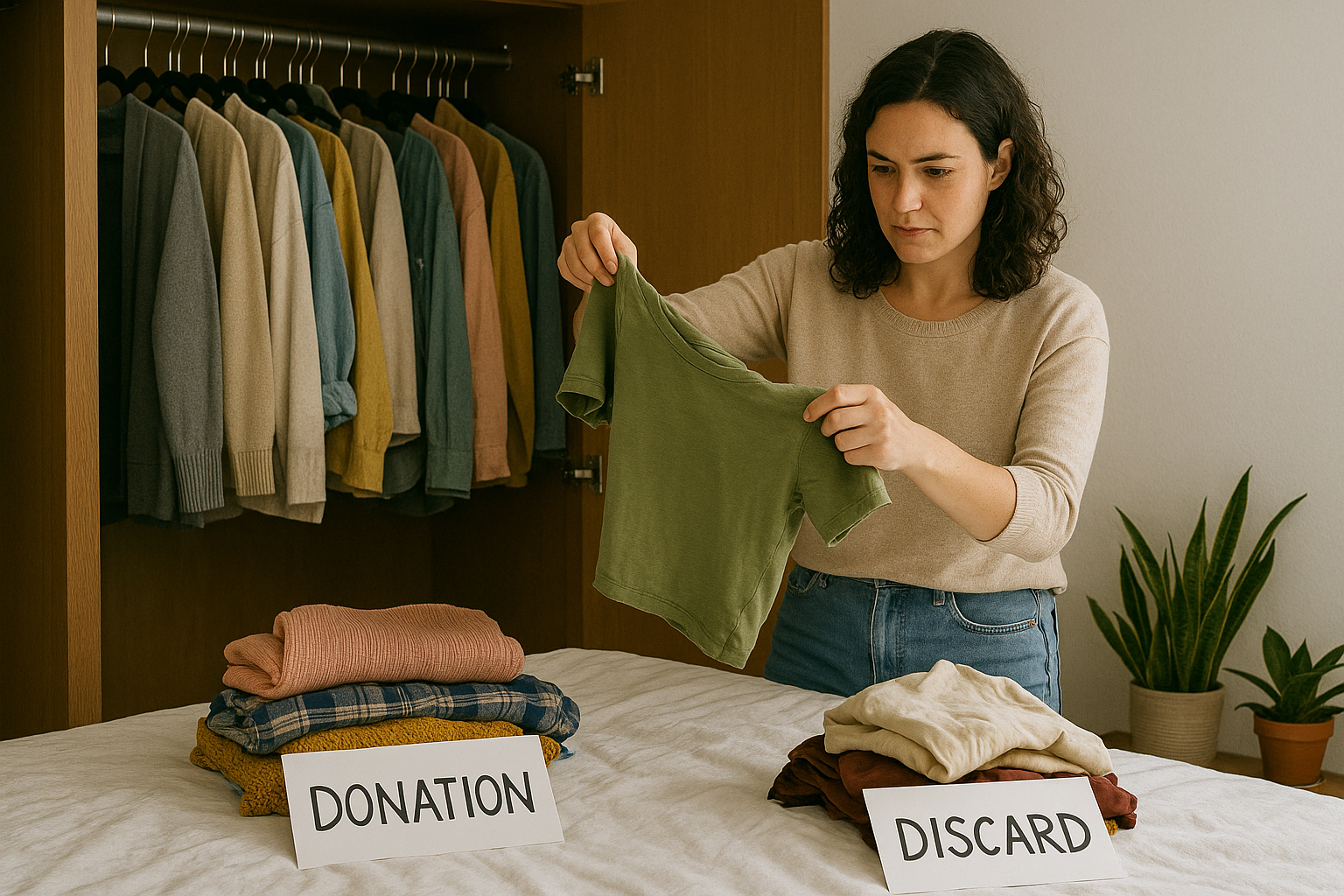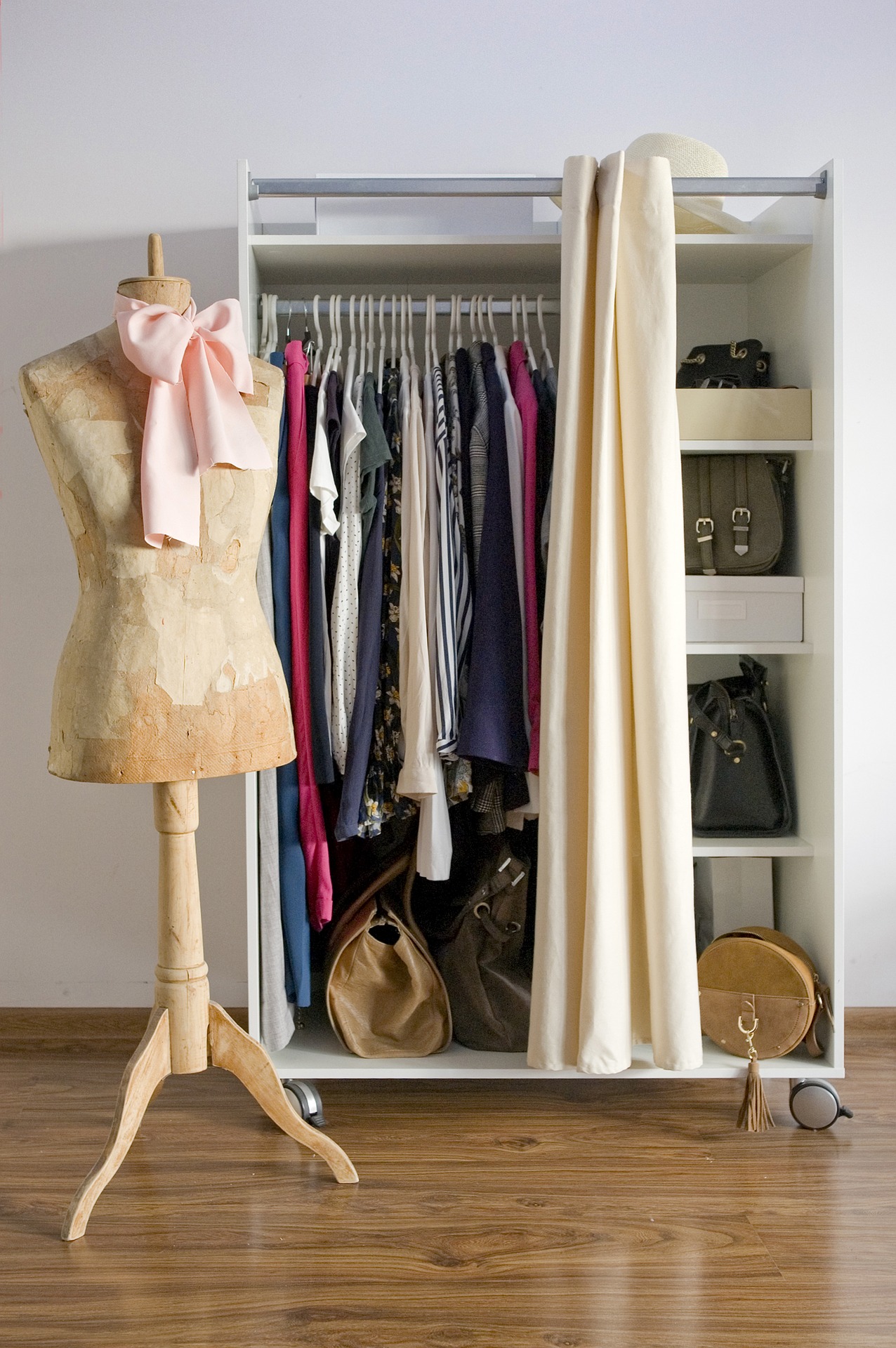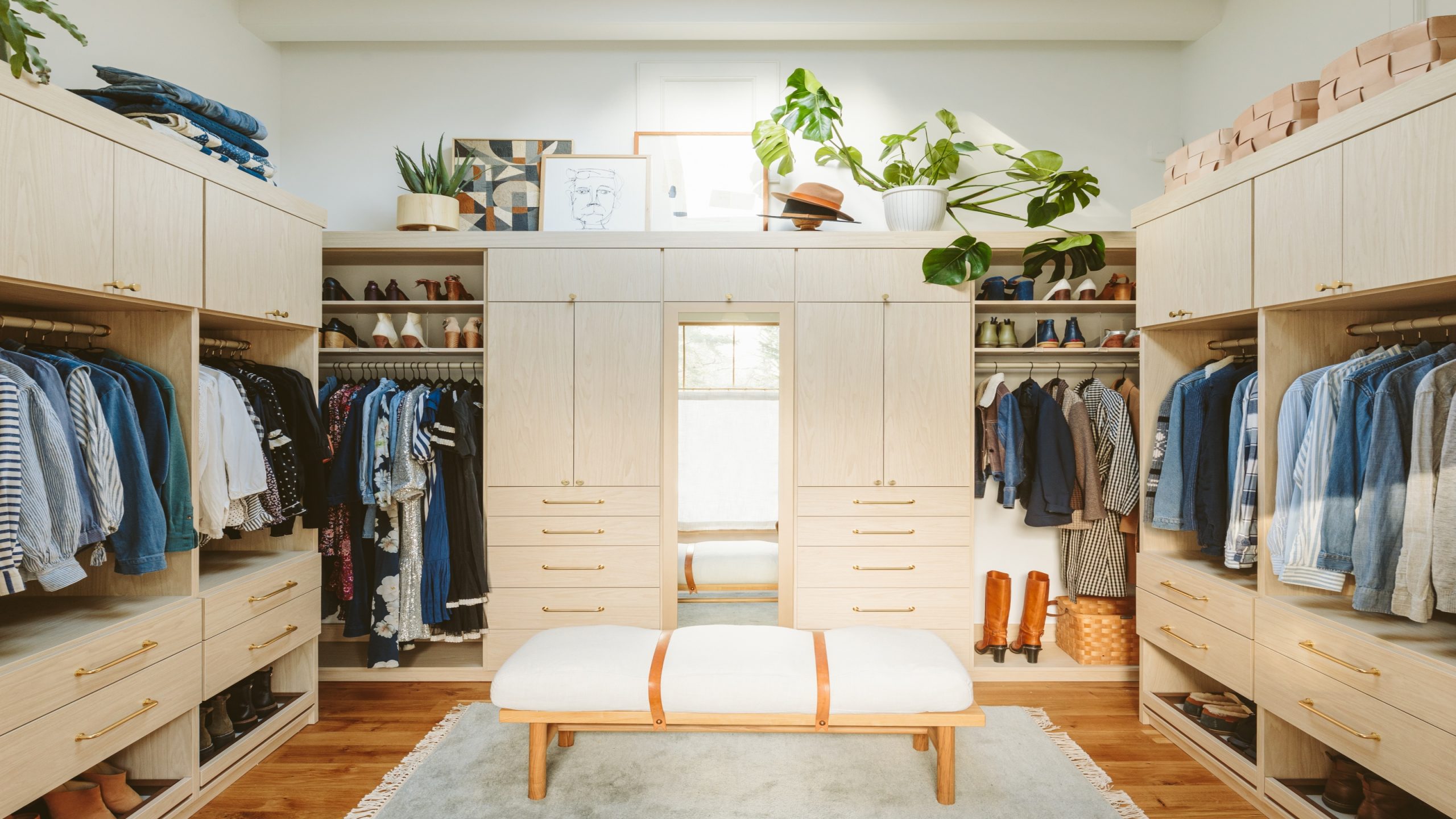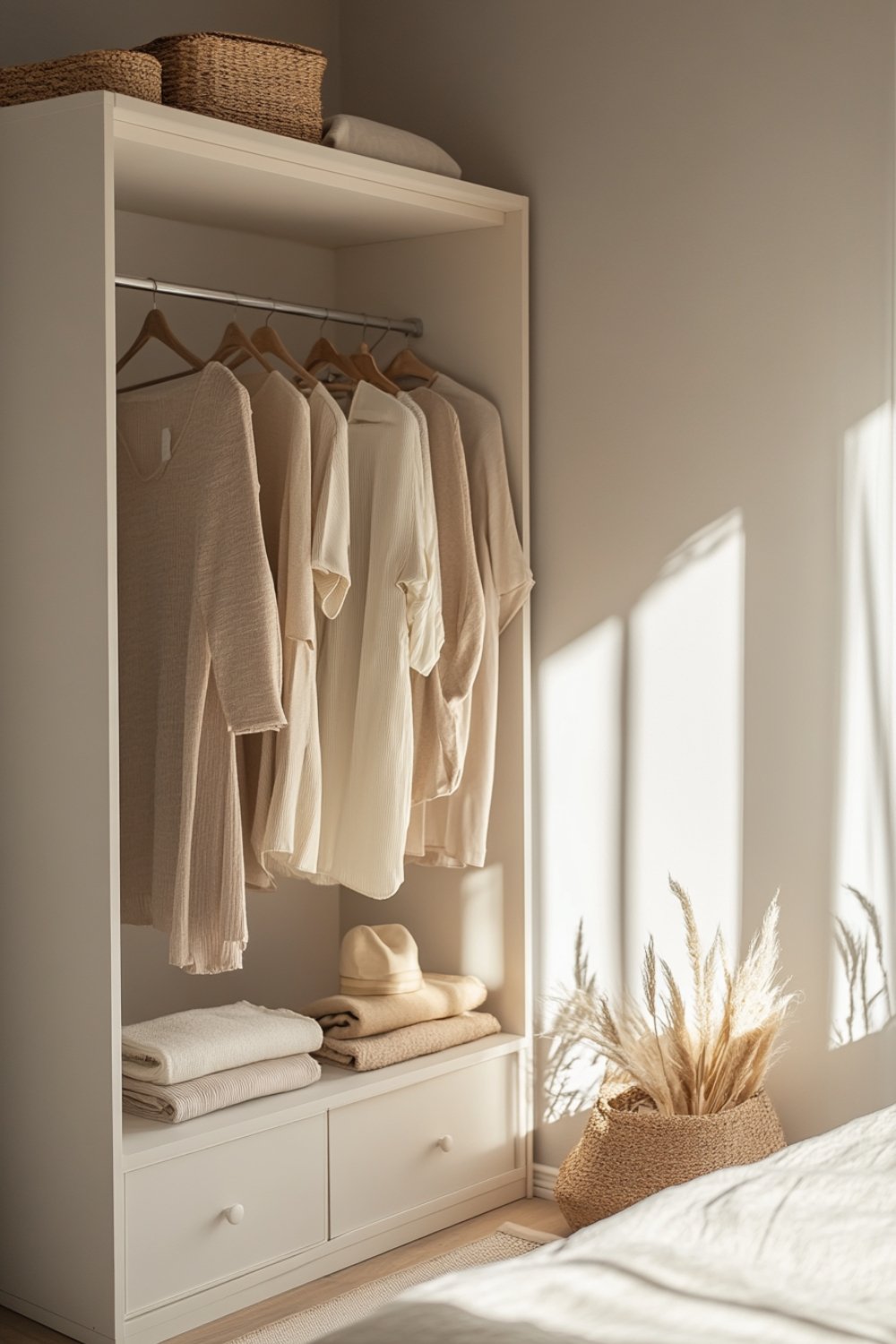Building a Sustainable Wardrobe: Eco-Friendly Choices for Minimalist Living

Embrace Sustainable Fashion
In an age where consumerism often overshadows the environment, we find ourselves at a critical junction. The fashion industry is one of the largest polluters, prompting many to seek alternatives that are both ethical and stylish. Building a sustainable wardrobe is not just a trend, but a necessary evolution towards eco-friendly living.
One of the key facets of sustainable fashion is the idea of adopting a minimalist approach to style, which can lead to profound positive changes. This method encourages individuals to focus on quality over quantity and emphasizes thoughtful consumption in clothing choices. Below are some of the critical aspects to consider:
- Quality Over Quantity: Opting for well-made, timeless pieces can significantly reduce the need for frequent replacements. Garments made with meticulous craftsmanship often utilize durable fabrics which withstand wear and tear, ultimately leading to fewer items in landfills. For example, investing in a classic leather jacket or a pair of tailored trousers may cost more upfront but can serve you well for years. These are pieces you can wear on various occasions, making them versatile and worth the investment.
- Eco-Friendly Materials: The choice of materials used in clothing has a substantial impact on the environment. Fabrics such as organic cotton, Tencel (made from sustainably sourced wood pulp), and bamboo are not only better for the planet but often softer and more breathable than conventional materials. Brands like Patagonia and Eileen Fisher prioritize eco-friendly fabrics, providing stylish options without compromising sustainability.
- Second-Hand Choices: Thrift shopping has gained popularity not just for its affordability but also for its role in reducing textile waste. By purchasing second-hand clothing, you actively participate in a circular economy that extends the lifecycle of garments. Second-hand stores and online platforms such as Poshmark and ThredUp offer a treasure trove of unique fashion finds that can help you express your individual style while also promoting recycling.
These choices promote not just a personal style, but also contribute to a healthier planet. In this article, we will explore how to effectively curate your wardrobe while keeping sustainability at the forefront. With practical tips and insightful strategies, your journey towards a more conscious closet is just beginning.
As we delve deeper into the world of sustainable fashion, it is essential to understand how our wardrobe decisions can have a lasting impact on our environment. By choosing eco-conscious brands, supporting local artisans, and being mindful of our consumption patterns, we can pave the way for a more sustainable future in fashion.
Join us as we explore innovative ways to design our wardrobes to reflect our values while still keeping our style sharp and distinct.
DISCOVER MORE: Click here to learn about the KonMari method
Curating a Conscious Closet
As we embrace the movement towards sustainable fashion, the concept of minimalist living becomes increasingly relevant. Understanding the benefits of a streamlined wardrobe is essential for making informed and responsible choices. Here, we expand on the foundational aspects of creating a wardrobe that aligns with eco-friendly principles while maintaining style and individuality.
Evaluating Your Current Wardrobe
Before diving into purchasing new pieces, it’s vital to assess what you already own. Many individuals have a myriad of outfits that often go unworn. Start by conducting a thorough inventory of your wardrobe. Identify which items you truly wear regularly and those that remain neglected. This evaluation helps clarify your personal style and reduces unnecessary purchases, contributing to a more sustainable approach.
Capsule Wardrobes: The Ultimate Minimalist Solution
One method gaining traction is the capsule wardrobe concept. This idea involves selecting a limited number of versatile pieces that can easily mix and match, ensuring you always have outfits ready for any occasion. Typically, a capsule wardrobe consists of 30 to 40 essential items, including tops, bottoms, outerwear, and shoes. The focus here is on quality fabrics and timeless styles that won’t go out of fashion quickly.
- Versatile Basics: Invest in classic staples such as plain white tees, black trousers, or a tailored blazer. These pieces provide a strong foundation for your wardrobe and can be dressed up or down, making them ideal for a minimalist lifestyle.
- Seasonal Additions: Consider adding a few seasonal items—like a cozy sweater for winter or colorful blouses for summer—that can complement your core pieces. However, be mindful not to overextend, as permanence is vital for sustainability.
- Multi-Functional Pieces: Look for garments that can be worn in various ways. For instance, a wrap dress can be styled for both casual outings and formal events, showcasing the practicality of fewer items.
Sustainable Brands Leading the Way
While creating a sustainable wardrobe, it’s essential to choose brands that prioritize eco-friendly practices. Many companies are now committed to reducing their environmental impacts by using sustainable materials and ethical labor practices. Brands like Everlane and Reformation operate with transparency regarding their sourcing and manufacturing processes, allowing consumers to make informed choices. Furthermore, shopping from local artisans also promotes sustainable fashion, as it reduces carbon footprints associated with transportation and manufacturing.
By emphasizing a minimalist approach and fostering a sense of mindfulness in your purchase decisions, your wardrobe can evolve into a sustainable haven. Adopting these practices not only contributes positively to the environment but also simplifies daily life, allowing you to focus on the things that truly matter. As we continue to explore the dynamics of a sustainable wardrobe, we will uncover more strategies for enhancing our eco-conscious choices in fashion.
| Category | Details |
|---|---|
| Sustainable Materials | Eco-friendly fabrics such as organic cotton, hemp, and Tencel. |
| Quality Over Quantity | Investing in durable, timeless pieces reduces waste. |
| Second-Hand Shopping | Thrift stores and online platforms minimize environmental impact. |
| Capsule Wardrobe | A minimal selection encourages creativity and reduces decision fatigue. |
Embracing the concept of a sustainable wardrobe is vital for eco-conscious consumers. The focus on sustainable materials allows individuals to make a positive environmental impact through their fashion choices. Fabrics such as organic cotton, hemp, and Tencel not only reduce the carbon footprint associated with clothing production but also support a healthier planet. Shifting the mindset towards quality over quantity encourages buying fewer, yet higher-quality items that withstand time and trends, ultimately leading to less waste in landfills. Additionally, exploring second-hand shopping provides access to unique styles while extending the life cycle of pre-loved garments. This practice significantly decreases the demand for new products and minimizes the ecological footprint of the fashion industry. By establishing a capsule wardrobe, individuals can cultivate a minimalist approach that helps streamline their clothing choices, promoting creativity and reducing the pressure of daily outfit decisions. Each of these facets contributes to a more responsible and fulfilling way of living—a core principle of minimalism aligned with sustainability.
DISCOVER MORE: Click here to simplify your wardrobe
Mindful Shopping and Ethical Considerations
With your foundation set through a sustainable wardrobe evaluation and a capsule wardrobe selection, the next step is to adopt mindful shopping habits. This involves not only being conscious of your consumption but also ensuring that your purchases align with ethical standards. As we navigate through an abundance of choices, understanding the implications of each purchase can significantly reshape our fashion footprint.
Researching Materials and Fabrics
When considering new pieces for your wardrobe, it is crucial to focus on the materials used in their production. Natural fibers such as organic cotton, linen, and hemp typically have a lower environmental impact compared to synthetics, which often require significant resources and contribute to pollution during both manufacturing and disposal. Additionally, recycled fabrics, like those made from plastic bottles or pre-existing textiles, represent a sustainable alternative that contributes to the circular economy.
- Organic Cotton: Unlike conventional cotton, organic cotton is grown without harmful pesticides and fertilizers, significantly reducing water usage and soil degradation.
- Bamboo: A fast-growing plant that requires minimal resources, bamboo fabric is naturally antibacterial and biodegradable, making it an appealing option for eco-conscious consumers.
- Recycled Fabrics: Brands utilizing recycled materials not only conserve resources but also keep waste out of landfills, turning potential garbage into something beautiful and useful.
Embracing Second-Hand Fashion
One effective method of building a sustainable wardrobe is to embrace second-hand fashion. Thrift stores, consignment shops, and online platforms such as Poshmark and ThredUp provide a treasure trove of unique items at affordable prices while minimizing the demand for new clothing production. Shopping second-hand not only gives clothing a new lease on life but also diverts waste from landfills, making it one of the most environmentally friendly choices you can make.
- Unique Finds: Shopping second-hand often leads to discovering vintage or one-of-a-kind pieces, adding character to your wardrobe that mass-produced items may lack.
- Budget-Friendly: Often significantly cheaper than new items, second-hand clothing allows for experimentation with different styles without breaking the bank.
- Community Support: Many thrift stores contribute to local charities and organizations, allowing your purchase to give back to the community.
The Importance of Maintenance and Repair
Another crucial aspect of sustainable living is properly maintaining and repairing your clothing. Extending the lifespan of your garments not only reduces waste but also minimizes the need for continual purchasing. Learning basic sewing skills can empower you to fix minor damages—like stitching a loose hem or replacing a button—allowing you to enjoy beloved pieces for many years to come.
- Regular Care: Following care instructions, like gentle washing and air drying, can significantly extend the life of your clothing.
- Upcycling: Get creative! Transform outdated pieces into new items, such as turning jeans into a stylish bag or repurposing a sweater into a cozy pillow cover.
- Professional Services: For more complicated repairs, consider investing in a tailor’s service rather than discarding a piece due to a small imperfection.
By focusing on mindful shopping, understanding materials, embracing second-hand fashion, and adopting maintenance practices, you can build a sustainable wardrobe that genuinely signifies your commitment to eco-friendly living. In the pursuit of a minimalist lifestyle, these practices not only enhance your personal style but also positively impact the world around you.
DISCOVER MORE: Click here to uncover the power of minimalist design!
Conclusion
In a world increasingly challenged by environmental concerns and fast fashion, building a sustainable wardrobe emerges as not just a personal choice but a necessary commitment to the planet. By adopting mindful shopping habits, we can move away from a culture of overconsumption and embrace a lifestyle that values quality, ethics, and sustainability. Engaging with materials that prioritize the well-being of our planet—like organic cotton, bamboo, and recycled fabrics—not only enhances our wardrobes but also supports a healthier ecosystem.
Furthermore, second-hand fashion allows us to retain creativity and individuality while simultaneously reducing waste. The thrill of uncovering unique pieces in thrift stores not only promotes circularity but also fosters a sense of community as purchases often aid local charities. Coupled with regular maintenance and an ethos of repair rather than replacement, we can significantly extend the life of our clothing, conserving resources and minimizing waste.
As you embark on this journey toward a more minimalist and sustainable wardrobe, consider the comprehensive impacts of your choices. This holistic approach not only elevates personal style but also inspires others to reconsider their shopping habits, enhancing the collective effort towards a more sustainable future. Every small step counts, and together, we can reshape the fashion landscape for generations to come. Dive deeper into eco-friendly practices, engage with local thrift communities, and inspire change—one garment at a time.


